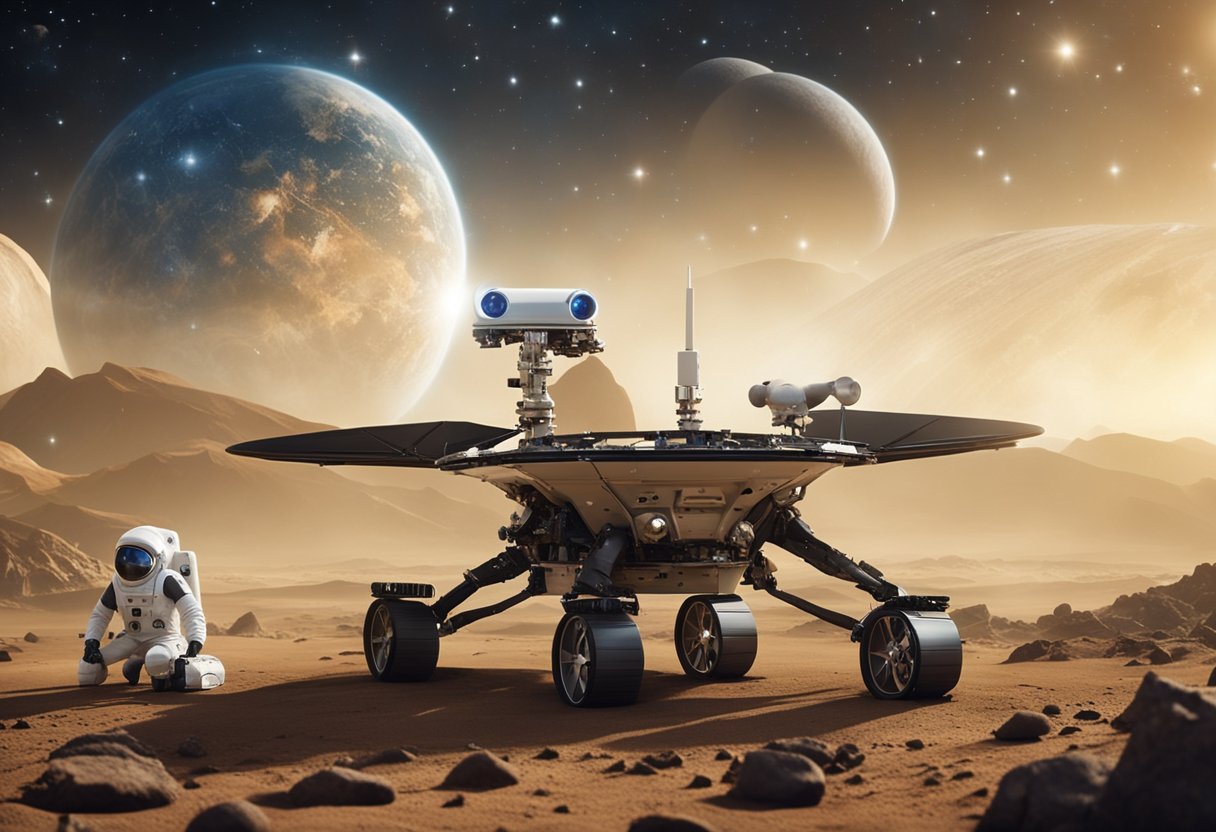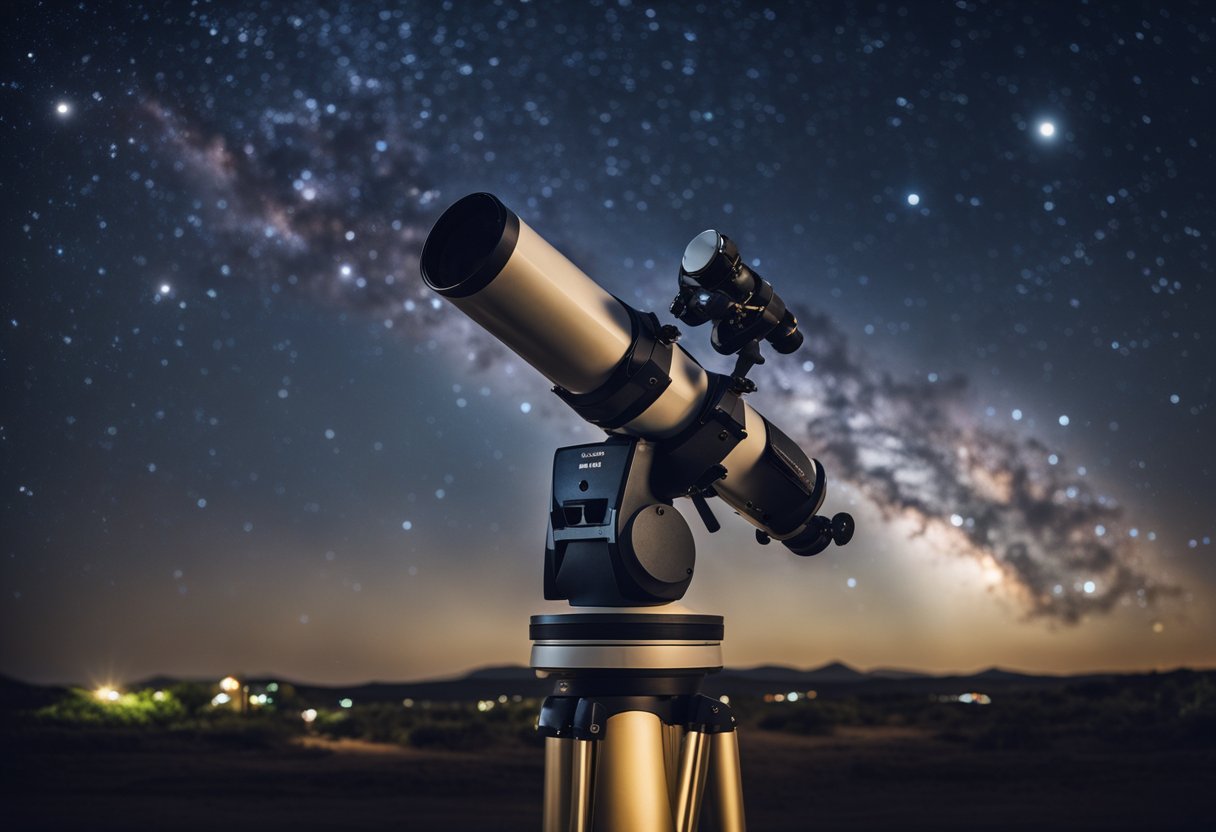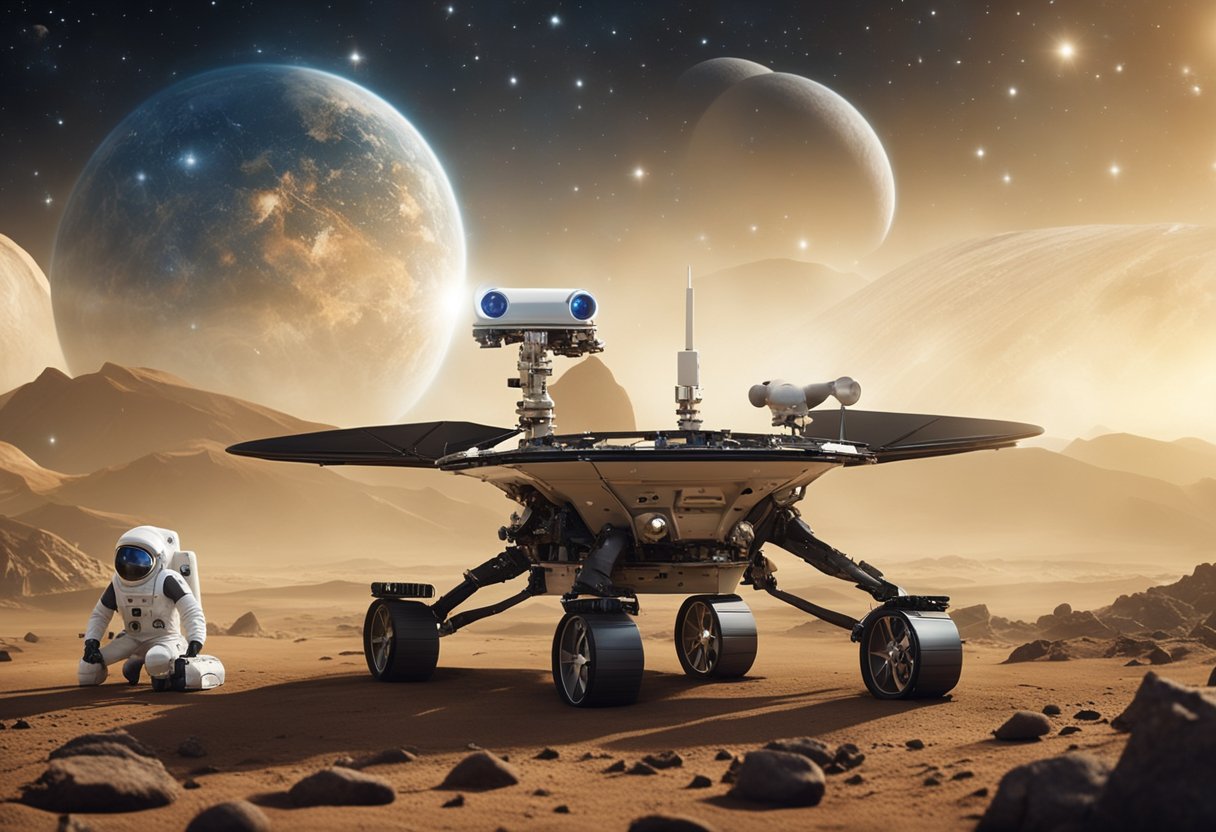
Alien Life Theories – The concept of extraterrestrial life has captivated our imaginations for centuries. As we peer into the vast expanse of the universe, the possibility of alien life forms existing beyond Earth continues to be a topic of immense interest and debate. With advancements in technology and space exploration, we are now able to search deeper into the cosmos than ever before, examining exoplanets and the outer reaches of our own solar system for signs of life. Astrobiology, the study of alien life, merges several scientific disciplines to investigate the potential for life in environments beyond our planet’s confines.

Our understanding of life in the universe is constantly expanding as missions and exploratory efforts aim to uncover evidence of biological activities outside Earth. Interstellar visitors, such as asteroids and comets, and anomalies detected through astrophysics bring forth tantalising hints of what may lie beyond the familiar bounds of our world. Moreover, as we consider making contact with intelligent extraterrestrial beings, we must also consider the ethical implications of such encounters. Are we prepared for the potential realities that may arise from discovering that we are not alone in the universe?
Exploring the vastness of space has led us to question if life, as we know it, exists elsewhere. Delving into the environmental conditions of planets and their capacity to host life is a step towards understanding the possibility of life beyond Earth.
For life to thrive on other planets, a confluence of factors is essential. Water is often seen as the cornerstone for habitability, as it is crucial for all known forms of life on Earth. Habitable zones, the regions around stars where conditions might be right for liquid water to exist, play a pivotal role in our search for life. Scientists are honing in on these zones in their quest to uncover biosignatures, which are indicators of past or present life.
The atmosphere of a planet is another vital component, as it can protect life from harmful space radiation and help regulate an ecosystem’s climate. Presence of an atmosphere can sustain an ecosystem, and gases such as carbon dioxide, methane, or oxygen can be hints of biological processes.
Extremophiles are organisms that have adapted to survive in extreme conditions on Earth. These adaptations suggest that life, in some form, might withstand extreme conditions on other planets or moons. Instances include life forms residing in the high-pressure environments of Earth’s subsurface oceans or within the sulphurous plumes of deep-sea hydrothermal vents.
However, the limitations are clear; extremophiles still require certain conditions to sustain life. While the capability of these organisms to endure helps us widen our criteria for habitable environments, each discovery of life’s resilience prompts a recalibration of where we might find life in the alien worlds of our galaxy. Our journey with SpaceVoyageVentures.com continues to fuel our understanding and hope of one day finding extraterrestrial intelligence.

As we peer deeper into the universe, the search for exoplanets—planets orbiting stars beyond our Sun—becomes a thrilling blend of technology and discovery, opening possibilities for finding extraterrestrial life.
To detect these distant worlds, we rely on advanced telescopes that monitor stars for the telltale dimming that occurs when an exoplanet transits, or passes in front of its host star. Light from the star, when studied, can indicate an exoplanet’s presence as it produces distinct signatures in the star’s spectrum of light. Space telescopes, such as the now-retired Kepler, have been pivotal in this pursuit, having confirmed thousands of exoplanets in our galaxy.
One of the most talked-about technologies in exoplanet discovery is the transit photometry method, which involves measuring the slight decrease in a star’s brightness as a planet moves across its face. This method has proven to be remarkably effective, especially when employed by space telescopes that avoid the distortions of Earth’s atmosphere.
In our search, we give special attention to the habitable zone, the region around a star where conditions might be right for liquid water—a critical ingredient for life as we know it—to exist on a planet’s surface. This zone varies in distance from a star depending on the star’s size and temperature.
The diversity of exoplanets we’ve found is astonishing, ranging from rocky worlds to gas giants. As we refine our technology, we’re beginning to examine the atmospheres of these planets, looking for gases like oxygen which could hint at the presence of extraterrestrial life. Advanced instruments, including upcoming space telescopes, could soon allow us to detect these biosignature gases with greater precision, potentially answering the age-old question of whether we are alone in the universe.
We also consider the effects of solar radiation and other cosmic factors that could influence a planet’s habitability. Advanced telescopes, such as the James Webb Space Telescope, will further aid us in characterising exoplanet atmospheres and assessing their potential to host life.
The search for these distant worlds not only enhances our understanding of the universe but also places our own world in perspective. Each exoplanet we discover serves as a reminder of the infinite possibilities space holds, fuelling dreams of one day travelling to these remote destinations, as envisioned by early space tourism initiatives like SpaceVoyageVentures.com.
Astrobiology is our multidisciplinary approach to understanding the possibilities of life beyond Earth. By combining astronomy, biology, geology, and chemistry, we seek to define what constitutes life in the universe and to detect it.
Life, as we understand it, is a complex system characterised by specific biological processes. Researchers in the field of astrobiology depend on a set of criteria to identify these systems, such as metabolism, growth, and response to stimuli. Our quest involves looking for biosignatures, or signs of life, such as the presence of carbon, nitrogen, hydrogen, and other life-essential elements. Extraterrestrial life may not mirror terrestrial life; therefore, scientists maintain a broad perspective when considering alien life forms.
Organic chemistry is fundamental to astrobiology, specifically in understanding how life emerges from non-living chemical compounds. Crucial elements like carbon and hydrogen form a variety of organic molecules that are the building blocks of life. Astrobiologists examine these elements in the pursuit of extraterrestrial life. For instance, the detection of methane in the atmospheres of other planets, like Mars and Venus, or moons such as Europa, could suggest biological processes. Additionally, the study of organic pollution or gases like phosphine can hint at the possibility of alien life adapting to different atmospheric conditions.

Exploring the cosmos has long been an ambition of our civilisation, prompting us to question whether we are alone in the universe and sparking countless theories about extraterrestrial life.
The ancient Greeks and Romans were among the first to consider the existence of other worlds, much like our Earth, and the possibility of aliens. Philosophers such as Anaximander speculated about the origins of life and the multiplicity of inhabited worlds. These discussions laid the groundwork for our modern understanding of extraterrestrial intelligence.
As we observed the stars and developed more sophisticated technology for astronomy, the question of alien civilisations expanded. The sense of our place in the cosmos evolved, acknowledging that the vastness of space might be filled with other forms of life.
In more recent times, the scientific community has made significant leaps in the search for extraterrestrial intelligence (SETI). Projects utilising radio telescopes to listen for potential communication from aliens highlight our resolve to contact extraterrestrial intelligence. Evidence such as the U.S. Navy sightings has kept public interest alive and fostered dialogue on extraterrestrial phenomena.
The Fermi Paradox addresses the contradiction between the high probability of extraterrestrial life and the lack of evidence for, or communication with, such civilisations. Our continued advancement in technology promises to enrich this search. Simultaneously, ventures like SpaceVoyageVentures.com excite us with the prospect of experiencing space first-hand, possibly bringing us closer to understanding if life exists beyond our planet.

In our constant quest to uncover the mysteries of the cosmos, we’ve launched numerous missions and developed state-of-the-art technology. These ventures are not just strides in our search for intelligent life, but also significant achievements for organisations such as NASA and the European Space Agency.
Our ventures to Mars have seen the deployment of sophisticated rovers like Perseverance, which are tasked with the study of the planet’s geology and climate. This data is vital in assessing the past habitability of Mars and the potential for finding signs of past microbial life. Similarly, the Titan Dragonfly mission aims to explore the surface of Saturn’s moon Titan, an environment that may be capable of supporting life.
Our advancements in telescopic technology, spearheaded by the James Webb Space Telescope, enable us to observe the universe with unprecedented clarity. Studying exoplanets such as those orbiting Proxima Centauri has become more feasible, pushing the boundaries of our understanding of potentially habitable worlds. Organisations are also using satellites to peer deeper into space, hoping to paint a clearer picture of our moon, and the unexplored regions beyond.
In parallel with the efforts of space agencies, SpaceVoyageVentures.com provides information on the burgeoning field of space tourism, which includes current and upcoming opportunities for civilians to experience space travel.
In our quest to uncover whether we are alone in the universe, the search for signs of extraterrestrial intelligence has remained a central focus. We scrutinise cosmic phenomena and signals in hopes of identifying those that might be artificial in origin, potentially indicative of alien civilisations.
The Search for Extraterrestrial Intelligence (SETI) is a concerted effort by scientists to detect messages from intelligent alien life. We utilise powerful telescopes to scan the cosmos for radio signals that do not match natural cosmic patterns. Remarkable projects, such as the Allen Telescope Array, underscore our persistent watch for these non-random signs.
When discussing potential evidence of extraterrestrial life, we pay close attention to technosignatures. These are indicators such as unusual atmospheric chemicals, city lights on distant worlds, and narrowly focused radio waves. If we were to intercept a confirmed alien signal, this would not only revolutionise our understanding of life’s ubiquity but also hint at the technological capacities of these distant beings. Our methods for detection are refined continuously, to better distinguish between the haphazard nature of astrophysical phenomena and the deliberate nature of interstellar communication.
Throughout our endeavours, we look to the stars with a sense of wonder, considering the profound implications of potentially making the greatest discovery in human history – that we are indeed not alone.

Exploring the realms of space, we often find ourselves fascinated by the possibility of life beyond Earth. Within our solar system, attention has focused primarily on Mars and the moons of the outer planets that harbour subsurface oceans, which are considered potential habitats for extraterrestrial life.
Mars, with its dry riverbeds and outflow channels, offers compelling evidence that liquid water once flowed on its surface. We understand that the presence of water is crucial for life as we know it. Recent missions to the Red Planet have detected signs of previous water activity and even seasonal brine flows. Such features make Mars a primary candidate for past life, and our exploration efforts continue to seek proof of whether life ever arose there.
Robotic Probes: Our unmanned spacecraft have detected minute amounts of methane in the Martian atmosphere, a possible indicator of biological processes.
Sample Retrieval: Future missions aim to return samples from the Martian surface to Earth, providing us the chance to analyse these materials in detail for signs of past life.
Beyond Mars, we look at the icy moons of the gas giants, such as Europa, a moon of Jupiter. These celestial bodies harbour oceans beneath their icy crusts and, possibly, sources of heat from their planetary core.
Europa: With twice as much water as Earth’s oceans, Europa’s subsurface ocean is a top candidate for the potential harbouring of life. The interaction between Europa’s water and its rocky mantle may create the conditions necessary for life.
Sourcing Energy: Life as we know it requires energy, which could potentially be supplied by the tidal forces exerting on these moons, leading to hydrothermal vents akin to those on Earth’s ocean floors where life thrives.
Our hunt for life within the solar system is underpinned by understanding that liquid water, a stable source of energy, and the right chemical ingredients are key. We continue to develop technology to probe these worlds more effectively and are planning missions that could reveal the secrets of these icy realms. Europa, with its subsurface ocean, is thus not only a focal point for our explorations but also a beacon of hope for unveiling alien life within our cosmic neighbourhood.
Exploration of the cosmos has furnished us with intriguing phenomena, not least among them the passage of interstellar objects through our solar system and the perplexing reports of unidentified flying objects.
In 2017, astronomers were captivated by the detection of ‘Oumuamua, the first interstellar object observed passing through our solar system. This elongated, cigar-shaped body, discovered by the Pan-STARRS-1 telescope, raised more questions than it answered. Notably, the acceleration of ‘Oumuamua departing from our sun couldn’t be fully explained by gravitational forces alone, proposing the possibility of ‘Oumuamua being a thin sail propelled by radiation pressure as posited by Avi Loeb.
Military sightings of unidentified flying objects (UFOs) often refer to airborne anomalies surpassing known human technology capabilities. These sightings, backed by sensor data, have prompted official investigations into the likelihood of phenomena beyond our current understanding. The recent declassification of UFO encounters by various military branches has lent a new legitimacy to these reports. The objects’ erratic motion and acceleration suggest a technology unobservable within our current understanding of physics, potentially harnessing power from phenomena such as black holes or leveraging advanced propulsion techniques akin to those contemplated for future space tourism on websites like SpaceVoyageVentures.com.
Astrophysics plays an indispensable role in the quest to discover extraterrestrial life. Leveraging advanced technology and methodologies, we delve into the intricacies of the cosmos, from the formation of celestial bodies to the mysterious influences of dark matter and energy.
Understanding the origins of stars and planets is fundamental to our search for alien worlds. Stars form from collapsing clouds of gas and dust, with the most promising locations for life being around stable, long-lived stars. The detailed research conducted by astrophysicists informs us about the types of stars that may host habitable planets. The James Webb Space Telescope, slated to be NASA’s premier observatory, will expand our capability to detect potential biosignatures in the atmospheres of these planets.
Dark matter and energy, though invisible, affect the structure and evolution of the universe. Their presence could influence the potential habitability of planets beyond our solar system, known as exoplanets. Researchers are exploring how these mysterious components of the cosmos might impact the formation and sustainability of conditions necessary for life. The work of Scientists in this realm is aided by the set of criteria developed by SETI, which includes the examination of various wavelengths of light as potential signals from intelligent life forms.
By probing the atmosphere of distant planets and utilising technology to detect unusual signals, we garner insights into the possibility of life in uncharted regions of the universe. Our ongoing pursuit in astrobiology highlights the interconnected role of diverse cosmic factors on the quest for understanding life’s potential across the cosmos.
Our explorations extend beyond academic curiosity, as seen in the emerging enterprises like SpaceVoyageVentures.com, indicative of the growing interest in space as both a frontier for science and a potential venue for futuristic tourism.

In addressing the potential contact with extraterrestrial life, we must carefully consider ethical dimensions and the shaping of policies that reflect our collective values and responsibilities.
Our approach to establishing contact with alien life forms necessitates a framework that not only safeguards humanity but also respects any discovered life. We are tasked with formulating protocols and global policies. These should be designed to prevent harmful contamination to both our ecosystems and extraterrestrial ones. For example, there is an ethical obligation to ensure that space missions, such as those possibly conducted by future entities like SpaceVoyageVentures.com, adhere to stringent planetary protection standards.
The moment we confirm the existence of extraterrestrial life, the implications will be profound. The consequences of discovery encompass both scientific inquiry and public reaction. Scientifically, we must responsibly manage and communicate the findings, fostering global scientific collaboration. Publicly, we must prepare for a wide spectrum of reactions and ensure that the social, philosophical, and theological implications are thoughtfully navigated. Recognising the potential for monumental shifts in our worldviews, we must tread cautiously, considering the rights and dignities of all life forms encountered.

These are some of the most pressing inquiries we encounter when discussing the potential for life beyond Earth.
The panspermia hypothesis suggests that life on Earth may have originated from microorganisms or chemical precursors of life present in outer space and that these life forms were transferred to Earth. Studies have shown that certain extremophiles can survive the harsh conditions of space, which supports the idea that life could travel between planets or star systems.
The Drake Equation is a probabilistic argument used to estimate the number of active, communicative extraterrestrial civilizations in the Milky Way galaxy. It incorporates factors such as the rate of formation of stars, the fraction of those stars with planets, and the likelihood of life developing. This equation frames the scientific discourse on the potential for intelligent life beyond our planet.
Extremophiles are organisms that thrive in conditions extreme by Earth standards, such as high pressure, temperature, or acidity. Their existence demonstrates life’s ability to adapt to a wide range of environments, suggesting that life could potentially exist in similarly extreme conditions on other planets.
Exoplanets within the habitable zone, also known as the Goldilocks Zone, are at a distance from their star where conditions might be right for liquid water to exist on their surface—a crucial element for life as we know it. The discovery of such planets significantly raises the prospects of finding extraterrestrial life.
Radio signals are a key focus of the Search for Extraterrestrial Intelligence (SETI), which uses radio telescopes to listen for unusual patterns that may indicate a non-natural source. Detecting such signals could provide evidence of technological activity by extraterrestrial beings.
The Fermi Paradox considers the contradiction between the high probability of extraterrestrial civilizations existing and the lack of evidence for, or contact with, such civilizations. It raises questions about the nature and development of life, prompting us to consider factors like the rarity of life-generating and sustaining conditions or the possibility of civilizations self-destructing before we detect them.